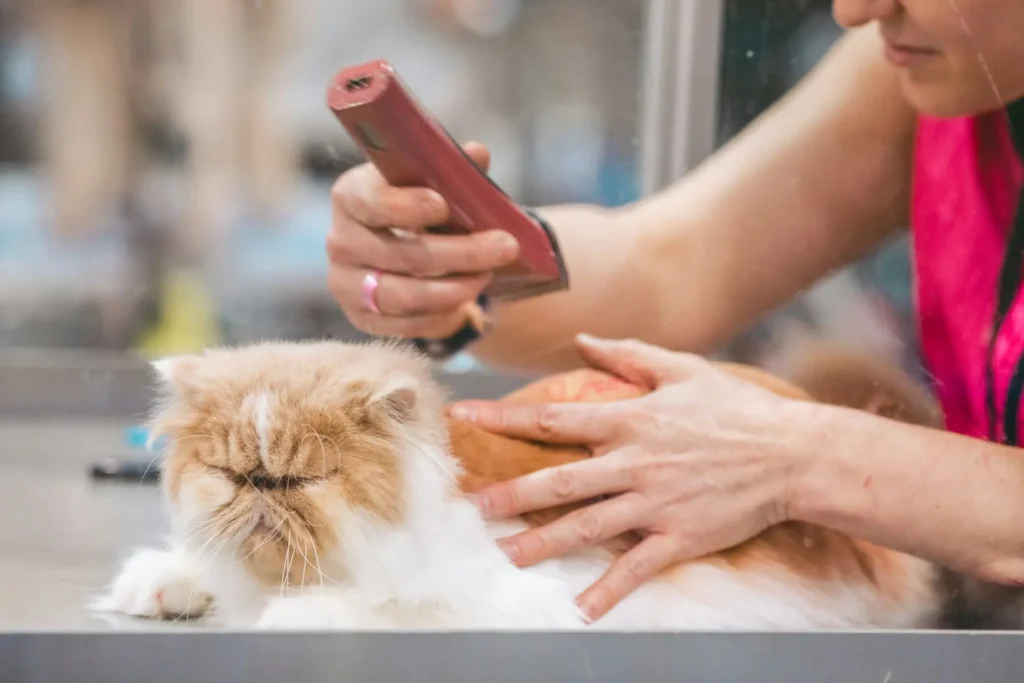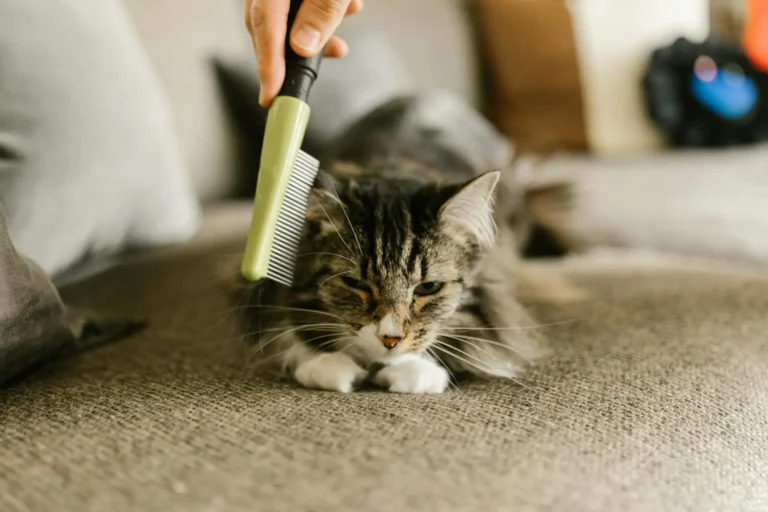Disclaimer: This article may contain affiliate links. If you click and purchase, we may earn a commission at no extra cost to you. As an Amazon Associate, we earn from qualifying purchases.
Cat Grooming Tips (2025): The Ultimate Guide to Grooming Your Cat at Home
Today with this detailed article, we are going to to discover expert-approved cat grooming tips for 2025 to groom your cat at home safely, reduce shedding and avoid scratches. Find out all the details now.
Grooming your cat can feel like navigating a minefield, especially when you are dodging sharp claws or a sudden hiss from your furry friend. I remember the first time I tried to brush my cat, Luna as it ended with a dramatic escape and a few scratches to remind me who’s boss. But with the right cat grooming tips, you can turn this into a stress-free bonding experience. In 2025, grooming your cat at home is not only doable but also essential for their health, reducing issues like hairballs, matted fur and skin irritations. This comprehensive guide will walk you through brushing, bathing, nail trimming and more, ensuring you and your cat emerge unscathed and closer than ever.
No matter if you are dealing with a feisty feline like Luna or a more relaxed kitty, these vet-approved techniques will help you keep their coat shiny, nails trimmed, and health in check. Regular grooming is not just about aesthetics but it is about preventing health issues and strengthening your bond. Let us find out how you can master cat grooming at home without the chaos.
Key Insights on Cat Grooming
Cat grooming is more than just keeping your feline looking fabulous, still it’s about their health and happiness. Here is what you shall learn in this guide:
- Brushing helps in reducing shedding and prevents painful mats.
- Bathing, when done right, keeps your cat’s coat healthy without stress.
- Regular nail trimming prevents overgrowth and protects your furniture.
- Ear and eye cleaning catches health issues early which keeps your feline healthy.
- Dental care is critical for long-term cat wellness.
See the table below for a quick overview of all key points.
| Key Topic | Quick Takeaway |
|---|---|
| Understanding Cat Grooming | Grooming enhances cat health, reduces shedding, and strengthens your bond. |
| Benefits & Challenges | Prevents hairballs and mats but requires patience to avoid scratches. |
| Practical Care Tips | Step-by-step brushing, bathing, and nail trimming for stress-free grooming. |
| Common Grooming Mistakes | Avoid errors like over-bathing or using human products to prevent discomfort. |
| Essential Grooming Tools | Use the right tools for safe, effective grooming tailored to your cat’s needs. |
| Expert Insights | Vet-approved methods ensure safety and effectiveness. |
| FAQs | Answers on frequency, aggressive cats, and safe products. |
Practical Care Tips for Cat Grooming at Home
1. Brush Regularly to Reduce Shedding and Mats
Why It Works: Regular brushing removes loose fur, dirt, and dander, preventing hairballs and skin irritations in cats. It also spreads natural oils for a shiny coat, enhancing your cat’s health and appearance.
How to Implement: For cats, use a slicker brush for long-haired breeds or a rubber grooming mitt for short-haired ones. Find these on Amazon. Choose a quiet room to keep your cat calm. Let them sniff the brush to get comfortable. Start with gentle strokes on their back or sides, avoiding sensitive areas like the belly. Brush in the direction of hair growth, using short, light strokes. For mats, gently tease them apart with your fingers before brushing. Offer treats after each session to build positive associations.
Real-Life Example: When I first started brushing Luna, she was skeptical. I used a soft slicker brush and gave her treats after each session. Now, she purrs through her daily brushing.
Expected Results: Expect reduced shedding, fewer hairballs, and a healthier coat within weeks. For more on shedding, see our article on why cats shed so much.
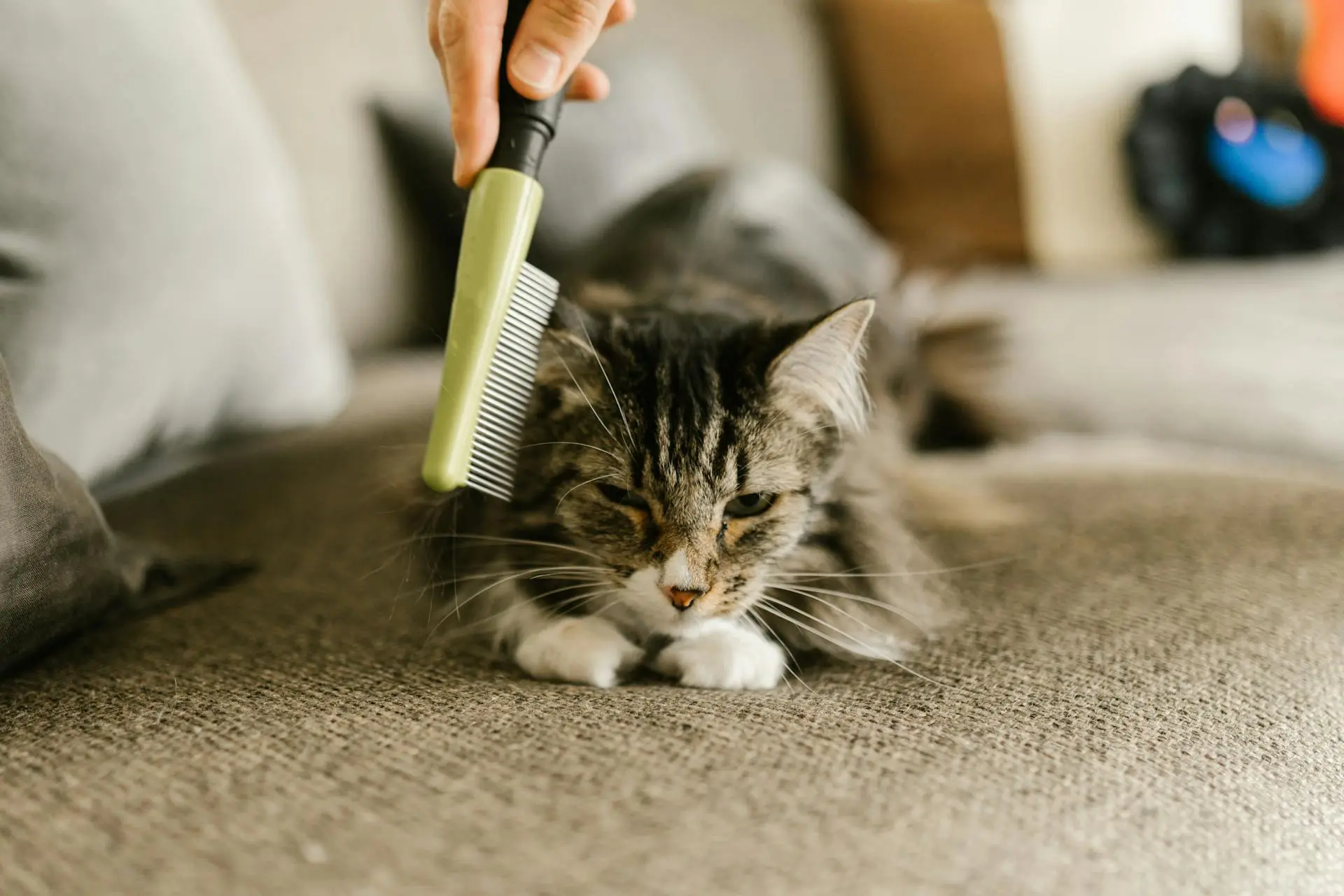
Image Credit: RDNE
2. Bathe Sparingly with Pet-Safe Products
Why It Works: Baths remove dirt and odors but should be infrequent to avoid stripping natural oils, which can cause skin irritation.
How to Implement: Use a cat-safe shampoo, a non-slip mat, and a large towel. Fill a sink or tub with lukewarm water and place a non-slip mat at the bottom. Wet your cat with a washcloth, avoiding the face. Apply a small amount of cat-safe shampoo, lather gently, and rinse thoroughly. Towel-dry in a warm room to prevent chills. Avoid spraying water directly, as it can startle your cat.
Real-Life Example: Luna rolled in something smelly last summer, so I used a vet-recommended shampoo. It took two of us to keep her calm, but the washcloth method worked wonders.
Expected Results: A clean, odor-free cat with minimal stress. Avoid over-bathing to prevent skin issues, as advised by PetMD’s Pet Care Guide.

Image Credit: Pet Foto
3. Trim Nails to Prevent Overgrowth
Why It Works: Regular nail trims prevent painful overgrowth and reduce scratching damage to you and your furniture, making playtime safer.
How to Implement: Use cat-specific nail clippers and have styptic powder on hand for emergencies. Choose a quiet room and hold your cat gently. Press their paw to extend the nails. Clip only the clear tip, avoiding the pink quick, which contains nerves and blood vessels. Start trimming one or two nails per session if your cat is nervous. Reward with treats to keep them cooperative.
Real-Life Example: Trimming Luna’s nails every two weeks has made her playtime safer. She is less fussy now with regular sessions and treats.
Expected Results: Shorter, safer nails within a month. For more cat safety tips, see our pet emergency checklist.
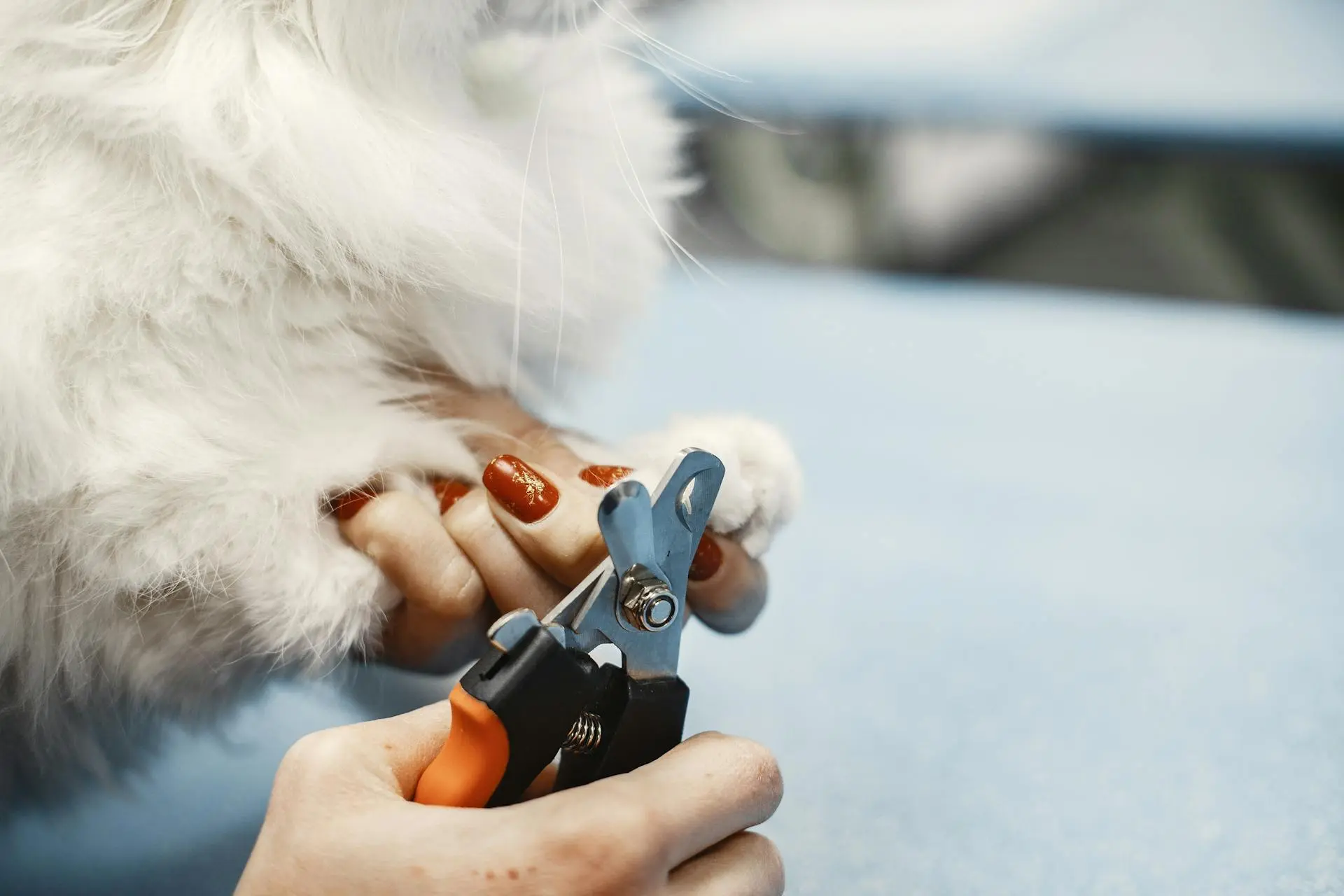
Image Credit: Gustavo Fring
4. Clean Ears and Eyes Weekly
Why It Works: Regular cleaning prevents infections and catches issues like wax buildup or tear stains early, ensuring your cat’s comfort.
How to Implement: Use a vet-approved ear cleaner, cotton pads and cat-safe wipes. Check ears for dirt or wax. Apply ear cleaner to a cotton pad and wipe the outer ear gently, never use Q-tips, as they can damage the ear canal. For eyes, use a cat-safe wipe to clean tear stains or discharge. If redness or cloudiness appears, consult a vet immediately.
Real-Life Example: Luna had tear stains that worried me. Weekly wiping with cat-safe wipes kept her eyes clear and a vet check confirmed she was healthy.
Expected Results: Cleaner ears and eyes, with early detection of potential issues.
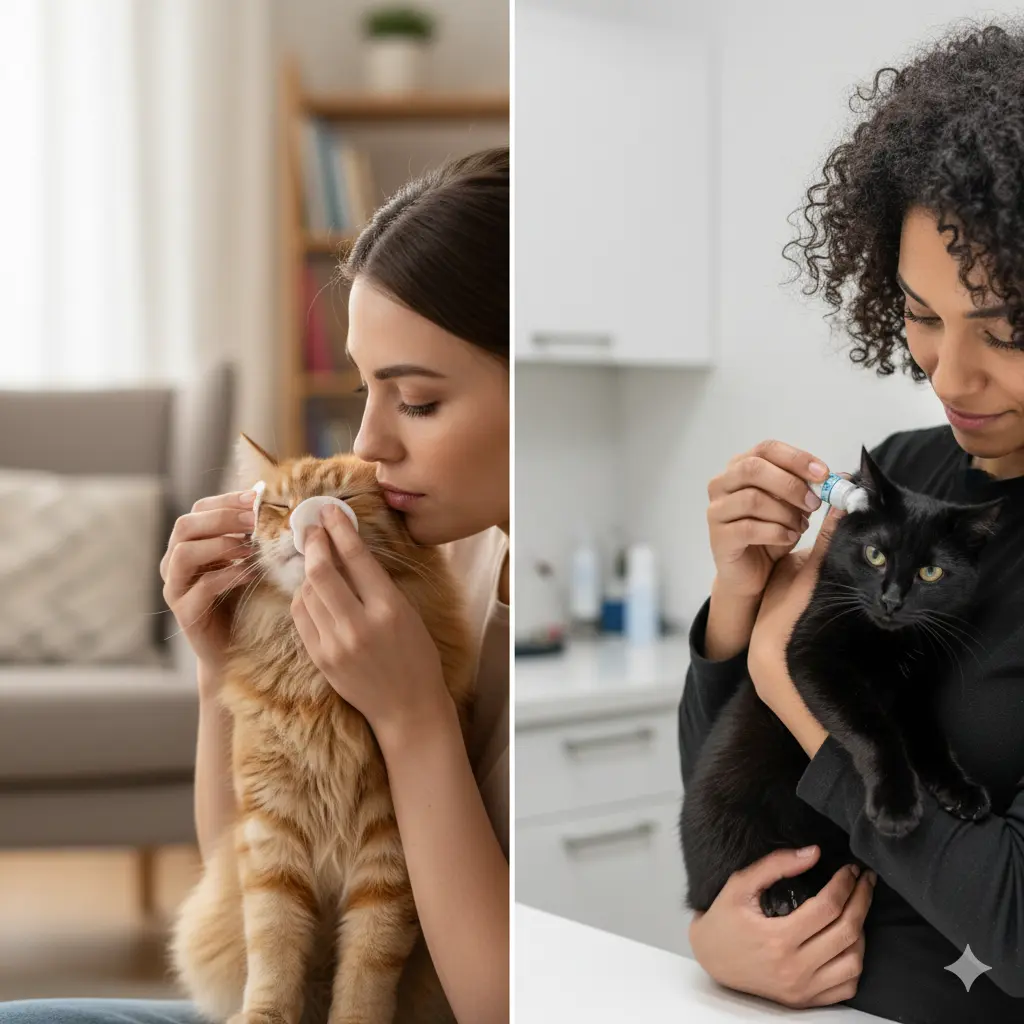
Image Credit: PetPalaceHubs
5. Prioritize Dental Care for Long-Term Health
Why It Works: Dental hygiene prevents plaque buildup, gum disease and bad breath, which can affect your cat’s overall health.
How to Implement: Use a cat toothbrush and cat-specific toothpaste, like those reviewed in our best cat toothpaste guide. Introduce the toothbrush gradually, letting your cat lick the toothpaste first. Brush gently in circular motions, focusing on the outer teeth. Aim for 2 to 3 times a week. Supplement with dental treats or water additives for extra protection.
Real-Life Example: Luna’s bad breath was a red flag. After brushing her teeth twice weekly for a month, her breath improved, and her vet praised her dental health.
Expected Results: Healthier teeth and gums, reducing the risk of dental disease.
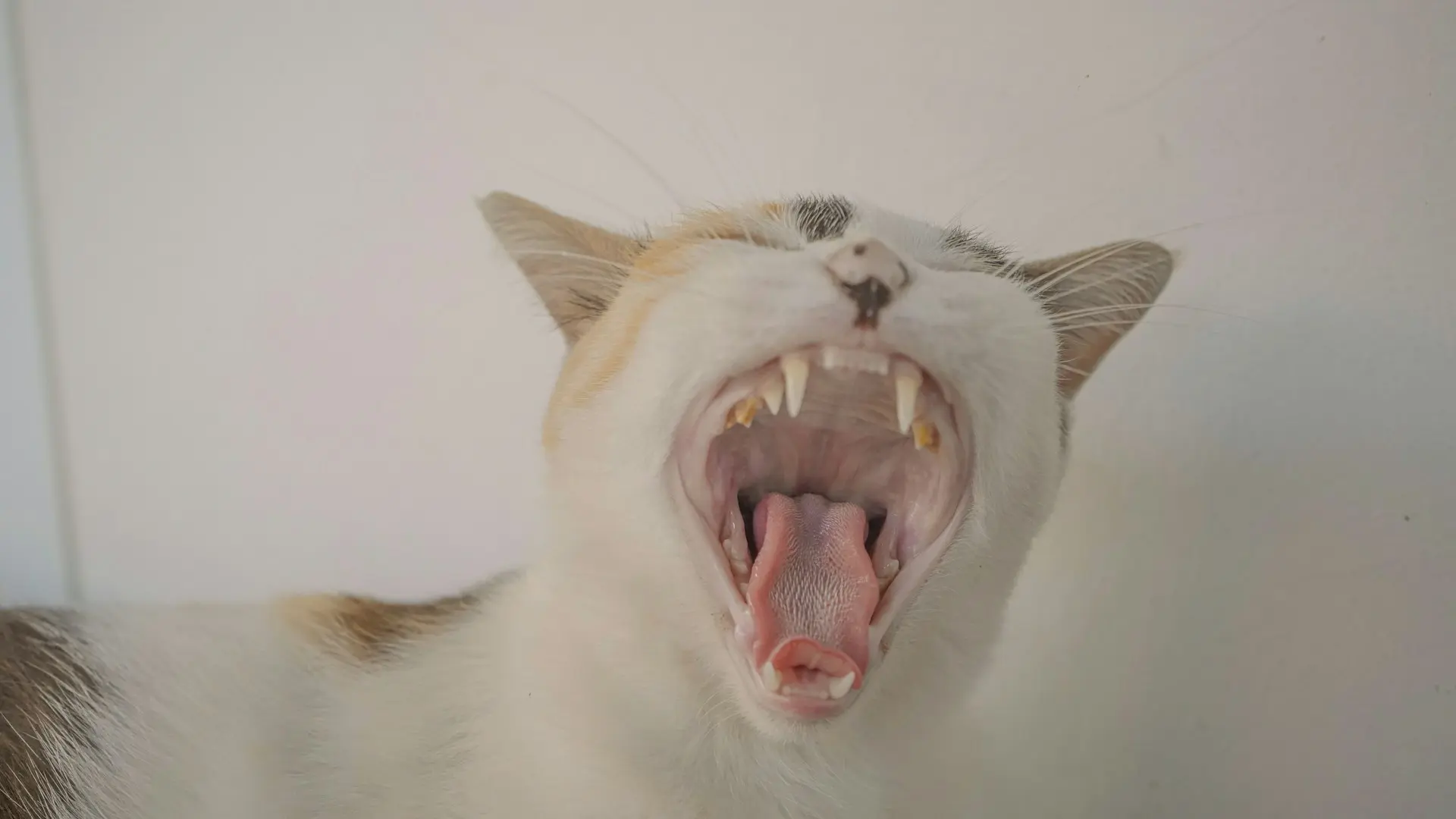
Image Credit: PhotobyPitcha
Understanding Cat Grooming at Home
Cat grooming at home involves maintaining your cat’s coat, nails, ears, eyes, and teeth to ensure they stay healthy and comfortable. Cats are natural self-groomers, licking their fur to keep it clean, but they can’t tackle everything. For instance, long-haired breeds like Persians often develop mats that need human intervention, and even short-haired cats like my Luna benefit from regular brushing to reduce shedding. Grooming also lets you spot health issues early, like lumps or parasites, which can be critical for timely vet visits. Many cat owners think grooming is just cosmetic, but it’s a cornerstone of preventive care, as noted by the ASPCA Pet Care Resources.
Grooming at home always requires patience and the right tools, but it is a skill any cat owner can master. Misconceptions, like thinking cats don’t need baths or nail trims, can lead to health issues. By understanding your cat’s needs, you can create a routine that keeps them happy and healthy.
Benefits & Challenges of Cat Grooming at Home
Grooming your cat at home offers numerous benefits but comes with challenges. Regular grooming reduces shedding, meaning less fur on your couch and fewer hairballs for your cat. It prevents mats, which can tug painfully on the skin and lead to infections. Grooming sessions are a chance to bond with your cat and check for abnormalities, like wounds or fleas. For example, while grooming Luna, I once found a small tick early, saving her from discomfort. However, the challenge lies in managing a cat’s stress or aggression during grooming. Luna once bolted mid-brush, leaving me with a scratched arm.
The key is patience and understanding your cat’s limits. Start with short sessions, use treats and watch for signs of overstimulation, like a swishing tail or flattened ears. If your cat is particularly anxious, check out our guide on natural remedies for cat anxiety to help them stay calm during grooming.
Common Cat Grooming Mistakes Owners Should Avoid
Grooming is essential for keeping your cat healthy but small mistakes can lead to skin issues, infections, or discomfort. Avoiding these common pitfalls ensures your cat stays comfortable and happy during grooming sessions.
1. Bathing Too Often or Too Rarely
Frequent baths can strip natural oils from your cat’s skin, causing dryness and irritation. Conversely, infrequent baths lead to odor and dirt buildup, which can cause skin infections. For cats, bathe only when necessary (e.g., after getting dirty).
2. Using the Wrong Shampoo
Remember human shampoos or harsh chemicals can irritate your cat’s sensitive skin or cause toxicity. Always use pH-balanced, cat-safe shampoos, like those available on Amazon, to keep their coat healthy and irritation-free.
3. Ignoring Matted Fur
Tangles and mats cause skin irritation and can harbor bacteria. Gently detangle with your fingers or a comb before brushing and brush regularly to prevent mats, especially for long-haired cats like Persians.
4. Cutting Nails Too Short
Clipping too close to the quick can cause pain and bleeding. Always clip only the clear tip of the nail and have styptic powder ready for accidents. Use cat-specific clippers for best results.
5. Neglecting Ears and Teeth
Uncleaned ears can develop infections, while tartar buildup leads to gum disease. Check ears weekly for wax or redness, and brush teeth 2 to 3 times a week with cat-safe toothpaste.
6. Rushing the Process
Rushing grooming can stress your cat, leading to resistance or aggression. Keep sessions calm and short, using treats to create a positive experience. Patience is key to building trust.
With the right knowledge and tools, grooming mistakes are easy to fix. Stay consistent, and your cat will thank you with a healthier coat and happier demeanor.
Essential Cat Grooming Tools Every Owner Should Have
Having the right tools makes grooming safer, faster and more comfortable for both you and your cat. Here’s a rundown of must-have tools for cats.
1. Brushes and Combs
Use a slicker brush for long-haired cats or a rubber grooming mitt for short-haired ones. Choose the right brush for your cat’s coat type to maximize effectiveness and comfort.
2. Nail Clippers
Scissor-style clippers work well for cats, providing precise cuts with less risk of cutting the quick.
3. Cat Shampoos and Conditioners
Choose shampoos based on coat type like anti-shedding for heavy shedders or hypoallergenic for sensitive skin. Look for natural ingredients like oatmeal or aloe vera for gentle cleaning.
4. Ear and Eye Cleaning Wipes
Cat-safe wipes and vet-approved ear cleaners keep ears and eyes free of debris, preventing infections and tear stains.
5. Grooming Scissors
Trimming scissors with rounded tips are ideal for tidying up fur safely near sensitive areas.
6. Towels
Use absorbent towels to prevent damp odor and fungal growth. Dry thoroughly in a warm room to keep your cat comfortable.
7. Toothbrush and Cat Toothpaste
A cat-specific toothbrush and flavored toothpaste make dental care easier and more effective, reducing plaque and bad breath.
Investing in quality grooming tools not only keeps your cat healthy but also strengthens your bond during grooming sessions. Check out trusted options on Amazon.

Image Credit: PetPalaceHubs
Expert Insights
Veterinary experts emphasize that grooming is a cornerstone of preventive care. The ASPCA notes that regular grooming can reduce the risk of skin infections and detect parasites early. Dr. Karen Becker, a renowned veterinarian, recommends brushing long-haired cats daily to prevent painful mats, which can harbor bacteria. For nail trimming, the Merck Veterinary Manual advises avoiding the quick to prevent bleeding and stress. Dental care is critical, as 70% of cats over three years old show signs of dental disease, which can lead to systemic health issues if untreated.
Grooming isn’t just about hygiene; it’s a chance to deepen your bond with your cat. My experience with Luna taught me that patience and treats go a long way. For more bonding tips, explore our guide on twinning with your cat.
FAQs About Cat Grooming at Home
Q1: How often should I groom my cat?
A: Grooming frequency depends on your cat’s coat and needs. Long-haired cats, like Persians, need daily brushing, while short-haired cats, like Luna, do well with weekly brushing. Nail trims every 10 to 14 days keep claws manageable. Ear and eye cleaning should happen weekly, and dental brushing 2 to 3 times a week is ideal. If your cat resists, start with short sessions and use treats to build trust. Check our cat towers guide for scratching posts to complement nail care.
Q2: What’s the safest way to groom an aggressive cat?
A: Aggressive cats require extra caution. Create a calm environment with dim lights, soft voices, and no sudden movements. Use calming pheromone sprays, like Feliway for cats, to reduce stress. Groom in short bursts, stopping if your cat shows signs of overstimulation, like a swishing tail or flattened ears. Reward cooperation with treats. For tough cases, consult a professional groomer or vet. Our natural remedies for cat anxiety can help calm your cat.
Q3: Can I use human grooming products on my cat?
A: Never try and use human grooming products on cats. Human shampoos, wipes or clippers can irritate their sensitive skin or cause toxicity. Always choose cat-specific products, like shampoos labeled for feline use. For example, I use a cat-safe shampoo for Luna’s baths, which keeps her skin healthy. Stick to vet-approved tools and products to ensure safety, as recommended by PetMD.
Conclusion
Grooming your cat at home in 2025 doesn’t have to be a battle. With these cat grooming tips, you can brush, bathe, trim nails, and clean ears confidently while keeping your cat calm. Take it slow, use the right tools, and reward your cat’s patience. Whether you’re grooming Luna or your own furry friend, these steps will strengthen your bond and keep them healthy. For more cat care advice, explore our pet emergency checklist or British Shorthair cats guide.

Experienced pet owner with 5 to 7 years caring for cats and birds. Passionate about sharing actionable tips, trusted advice, and real-life insights for healthier, happier cats.
Disclaimer: This article may contain affiliate links. If you click and purchase, we may earn a commission at no extra cost to you. As an Amazon Associate, we earn from qualifying purchases.

